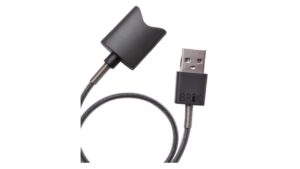Is your laptop battery not charging? Don’t worry, we’ve got you covered! When your laptop battery fails to charge, it can be frustrating and inconvenient, hindering your productivity. But fear not, because in this article, we will dive into the reasons why your laptop battery isn’t charging and provide you with effective solutions to get it up and running smoothly again. So, if you’re wondering what happens when your laptop battery is not charging and how to fix it, keep reading! We’ve got all the answers you need to troubleshoot this common issue.
What Happens When Laptop Battery is Not Charging
Imagine you’re working on an important project or enjoying a movie marathon when suddenly you notice that your laptop battery is not charging. Panic sets in as you scramble to find a solution, but understanding what happens when your laptop battery doesn’t charge can help you troubleshoot the issue effectively. In this article, we will explore the possible reasons behind a laptop battery not charging and offer practical solutions to get your laptop back in action.
1. Battery Draining even when Connected to Power
One frustrating scenario when your laptop battery is not charging is when it continues to drain even when it’s connected to a power source. This can be attributed to a few common causes:
a. Faulty Power Adapter or Charging Cable
One possible reason for your laptop battery not charging properly is a faulty power adapter or charging cable. Over time, these essential accessories can become damaged or frayed, leading to connectivity issues. Inspect the charging cable for any visible signs of damage, such as exposed wires or bent connectors. Similarly, check the power adapter for any physical defects. If you find any issues, consider replacing the faulty components with genuine ones compatible with your laptop model.
b. Loose Connection
Another plausible reason for your laptop battery not charging is a loose connection between the charging cable and the laptop’s charging port. Often, due to frequent plugging and unplugging or accidental tugs, the connection between the two may become unstable. Ensure that the charging cable is securely plugged into both the laptop and the power source. Wiggle the cable gently to check for any intermittent charging. If you notice a loose connection, consider cleaning the charging port with compressed air or a soft brush to remove any debris that may be obstructing the connection.
c. Malfunctioning Battery
A malfunctioning battery can also be the culprit behind your laptop battery not charging. Laptop batteries have a limited lifespan, and over time, they may deteriorate or develop faults. If you experience consistent charging issues, it is possible that your battery is no longer functioning optimally. In such cases, you may need to replace the battery with a new one. Contact your laptop manufacturer or a reputable service center to find a compatible replacement battery.
2. Laptop Battery Stuck at a Certain Percentage
Another common issue laptop users face is when their battery remains stuck at a specific percentage, failing to charge beyond that point. Several factors can contribute to this problem:
a. Battery Calibration
Sometimes, a laptop battery may need to be recalibrated to accurately display the charge level. Over time, batteries can lose their calibration, leading to incorrect percentage readings. To recalibrate your battery, follow these steps:
- Charge your laptop to 100% while it is powered off.
- Keep the laptop connected to the power source for an additional two hours.
- Disconnect the power source and let the battery drain completely. You can speed up this process by using your laptop or keeping it in sleep mode.
- Once the battery is fully discharged, reconnect the power source and charge it back to 100% without interruption.
b. Battery Health
In some cases, a laptop battery may reach a point where it can no longer hold a charge beyond a specific percentage due to wear and tear. Laptop batteries have a limited number of charge cycles before their capacity diminishes. If you’ve had your laptop for an extended period or have heavily used the battery, it’s possible that the reduced capacity is causing it to stop charging at a certain percentage. In this situation, replacing the battery is the most effective solution.
c. Software or Firmware Issues
Occasionally, software or firmware issues can prevent a laptop battery from charging beyond a specific percentage. Outdated or corrupt power management software or firmware can disrupt the charging process. To address this, ensure that your laptop’s operating system, drivers, and firmware are up to date. Visit the manufacturer’s website or use automatic update tools to check for available updates and install them accordingly.
3. Laptop Battery Not Charging at All
The most alarming situation occurs when your laptop battery does not charge at all, showing no signs of life. Several factors can contribute to this issue:
a. Dead Battery
A dead battery is often the primary reason for a laptop not charging at all. Over time, if a battery is not properly maintained or is exposed to extreme temperatures, it may lose its capacity to hold a charge. Additionally, a battery may die suddenly due to a manufacturing defect or internal damage. To determine if the battery is the problem, try removing it from the laptop and powering the device solely through the AC adapter. If the laptop turns on and functions without the battery, it’s a clear indication that the battery needs replacement.
b. Power Adapter Failure
Sometimes, the issue lies with the laptop’s power adapter. If the power adapter fails to provide the necessary voltage or current, the laptop won’t charge even though it is connected to a power source. To verify if the power adapter is the problem, try using a different adapter that matches your laptop’s specifications. It’s important to ensure that the adapter voltage, current, and connector polarity are compatible with your laptop model. If the laptop charges with the alternative adapter, replace your faulty power adapter.
c. Charging Port Problems
The charging port on your laptop can also be a point of failure. If the port becomes damaged or contains debris, it can hinder the charging process. Inspect the charging port on your laptop for any signs of physical damage or obstruction. If you notice any issues, consult a professional technician to repair or replace the charging port.
In conclusion, when your laptop battery is not charging, it can be an inconvenience that disrupts your workflow or entertainment. By understanding the various reasons behind laptop battery charging issues and following the recommended troubleshooting steps, you can quickly resolve the problem and get back to using your laptop without interruptions. Remember to prioritize regular maintenance, such as keeping your charging cables and ports clean and replacing worn-out batteries or power adapters, to prolong the lifespan of your laptop’s battery and ensure optimal performance.
Frequently Asked Questions
Why is my laptop battery not charging?
There can be several reasons why your laptop battery is not charging:
- The charging cable may be faulty or not connected properly.
- The battery itself may be reaching the end of its lifespan.
- There could be an issue with the power adapter or charging port.
- Software or driver issues may be preventing the battery from charging.
How can I troubleshoot a laptop battery that is not charging?
To troubleshoot a laptop battery that is not charging, you can try the following steps:
- Check if the charging cable is securely plugged into the laptop and power source.
- Inspect the charging port and cable for any physical damage.
- Try using a different power outlet or adapter to rule out any power supply issues.
- Restart your laptop and check for any software or driver updates related to battery charging.
- Remove the battery from the laptop, clean the contacts, and reinsert it.
- If possible, try charging the battery on a different laptop to see if the issue persists.
Can a faulty battery cause the laptop not to charge?
Yes, a faulty battery can cause the laptop not to charge. If the battery is damaged or has reached the end of its lifespan, it may not hold a charge or accept any power from the charger. In such cases, replacing the battery may be necessary.
What are the signs of a failing laptop battery?
Some signs of a failing laptop battery include:
- Rapidly draining battery life even with minimal usage.
- Difficulty turning on the laptop without being connected to a power source.
- Unexpected shutdowns or computer freezing due to insufficient battery power.
- Inability to charge the battery or maintain a consistent charge level.
Can I continue to use my laptop if the battery is not charging?
Yes, you can continue to use your laptop if the battery is not charging as long as it remains connected to a power source. However, keep in mind that if the battery is faulty, it may not hold any charge, and the laptop will shut down immediately upon disconnection from the power supply.
Final Thoughts
When your laptop battery is not charging, it can lead to several consequences. Firstly, your laptop will run out of power, causing it to shut down abruptly. This can be frustrating, especially if you are in the middle of an important task or project. Additionally, a non-charging battery can negatively impact your productivity as you may need to constantly connect your laptop to a power source. Furthermore, it may also indicate a potential issue with the battery or charging system, requiring professional assistance to resolve. In conclusion, when your laptop battery is not charging, it can disrupt your workflow and necessitate immediate attention.



